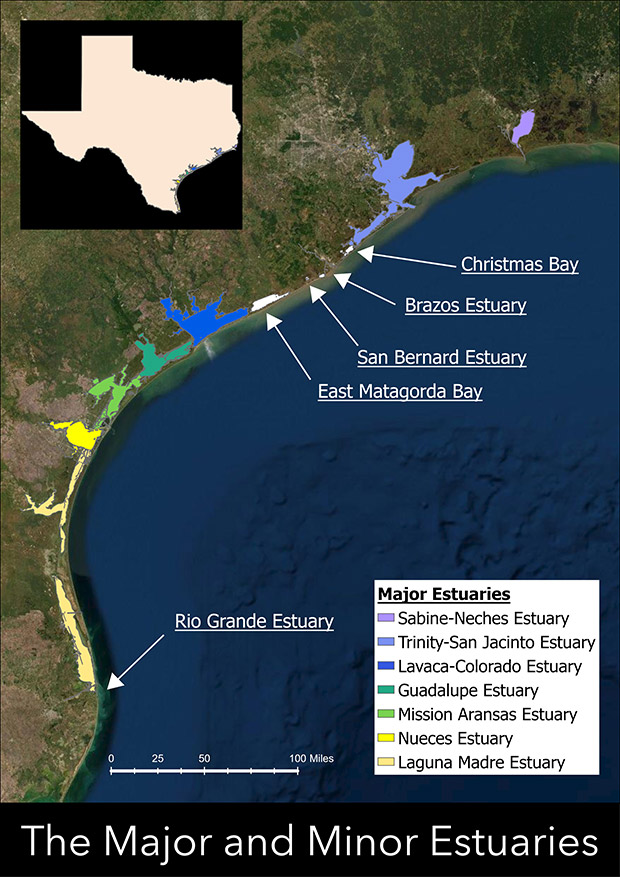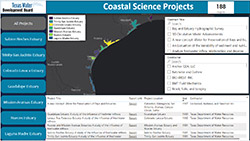Coastal Science
Texas has 367 miles of coastline within which 21 river basins terminate, bringing fresh water from surface run-off, rivers, and streams into individual bays. Here, bounded by barrier islands, the mixing of freshwater and seawater in these bays forms estuaries. Texas has seven major and five minor estuaries ranging from the nearly fresh Sabine Lake, which borders Louisiana, to the frequently hypersaline Laguna Madre along the southern coast. Although each estuary differs in size, hydrologic, and ecological characteristics, together they support a diverse array of species which serve as the raw materials for a variety of economic activities associated with commercial and recreational fishing, hunting, and birding. In addition, they provide many other ecological services, such as water filtration and the regulation of nutrients through nutrient cycling or storm surge protection and shoreline stabilization through the trapping of sediments and building-up of fringing wetlands.

The quality, quantity, and timing of freshwater inflow from rivers is important to maintaining the natural salinity, nutrient, and sediment loading regimes which support the unique biological communities of each estuary and also to ensure healthy ecosystem function. As the state's population grows, increasing demands for water may limit the volume of freshwater reaching the bays as well as alter the quality or timing in which the water arrives, thus impacting the productivity and characteristic of Texas estuaries.
Originally formed as the Bays & Estuaries program in 1975 to study the freshwater inflow requirements necessary to maintain productive bays and estuaries, the program has a long history focused on developing the science to support environmental flows. Building upon expertise in data collection and hydrology and hydrodynamic modeling, the rebranded Coastal Science program now serves a wider mission to include freshwater inflow science for water resources planning, flood science for coastal resiliency, and emergency oil spill response. Legislative directives dating back to 1975 have led to a body of research spanning many decades. To make these studies more publicly accessible, the Coastal Science dashboard presents a list of projects with links to final report publications where available. The dashboard will be regularly updated with new information. Please send feedback or questions to coastal-data@twdb.texas.gov.
Click on the image on the left to access the Coastal Science Projects Dashboard. The Dashboard showcases the external and internal projects of the Coastal Science program. The dashboard contains a full projects list, projects by major estuary, and links to project reports.
